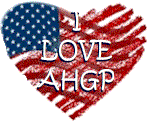Court of Wilson County
The county court of Wilson County was
organized at the house of John Harpole on Monday, December 23,
1799, the following commissioned magistrates being present:
Charles Kavanaugh
Elmore Douglas
John Harpole
John Allcorn |
John Lancaster
John Doak
Mathew Figures
William Gray |
Andrew Donelson
Henry Ross
William McClain |
The exact place of holding this
first session of the court, i. e., the location of Harpole's
house, is a matter of much dispute at the present time; yet
after diligent search and numerous inquiries from reliable
persons the writer is of the opinion that the house stood on the
north side of Spring Creek about five miles north of the present
county seat.
The court was organized by the election
of Charles Kavanaugh as chairman; Robert Foster, clerk; Samuel
Rosborough, sheriff; John Allcorn, register; John W. Payton,
trustee; William Gray, ranger; William Quesenbury, surveyor; and
Benjamin Seawell, solicitor.
Among the first acts of the court were
to admit John C. Hamilton to practice as an attorney, prove a
deed of conveyance of 640 acres of land from Michael Coonrad to
his brother Henry, and order a road laid off from the forks of
Round Lick Creek to the "25-mile tree," nearly opposite the
house of Edward Mitchell. The March term, 1800, was also held at
Harpole's, as were the June, September and December terms,
during which sessions John Hogg and George K. Wynn exhibited
their ear marks; John Herrod was granted license to keep an
ordinary, permissions were given to William Trigg, Joseph
Hendrick aid Mathew Figures to erect water grist-mills; Lemuel
Herrod, John Dickason, John B. Johnson, Jesse Wharton and
Nicholas Perkins were admitted to the bar; $2 was ordered paid
for the scalp of each wolf killed in the county; and a tax was
levied for county purposes of 6¼ cents on each 100 acres of
land, 6¼ cents on each white and 12½ cents on each black poll.
The court continued to meet at Harpole's
throughout the year 1801, during which time John Herrod took out
tavern license, Charles Smith was admitted to the bar, and rates
for ferrying were fixed as follows: Man and horse, 6¼ cents;
manor horse, 3½ cents; cattle and other stock, 3? cents per
head; loaded wagon and team, $1; empty wagon and team, 75 cents;
four-wheel carriages, $1; two-wheel, 50 cents.
From March until December, 1802, the
court met at the house of Henry Turner on Barton Creek, three
miles southwest from Lebanon, and from there adjourned to meet
at the house of Edward Mitchell, in Lebanon, the new county seat
having been laid out and the lots sold on August 16 of that
year. Mitchell was allowed by the court 25 cents for each meal
and lodging furnished the magistrates during the session of
court. During 1803 the court fined Obediah Spradim $1.50 for
profanity; James Anderson was granted ordinary license, and the
rate of charges for ordinaries was regulated as follows: rum,
wine, gin and French brandy, $8 per gallon; whisky or brandy 12½
cents per half pint; lodging 6¼ cents; corn or oats 4 cents per
gallon; horse with hay or fodder, 25 cents; pasturage for
twenty-four hours, 12½ cents.
In 1804 the March term of court was held
at James Anderson's in Lebanon, the June term, at Edward
Mitchell's and the September and December terms at Anderson's.
Throughout 1805 and until June 1806 the court met at Mitchell's
house, at which time the court adjourned to meet at the new and
first court house, that building having been completed and
placed in readiness for the court during the year. The first
court house was a small cedar-log building, with a clapboard
roof, and stood on the west side of the Public Square. It was
large enough only for the holding of the court, the county
officers having their quarters in various houses around the
Square. Beyond this meager description nothing more can now be
learned, as the memory of the present oldest inhabitant runneth
not back that far. The jail was completed a short time previous
to the court house. It was also a small cedar-log house, having
two apartments, and entrance to the cells was through a trap
door in the upper floor, the cells resting on the ground. The
court appointed Jeremiah Brown, John Allcorn and John Wynn a
committee in 1806 to award the contract for and superintend the
building of a bridge across the creek, which flows through the
town (now known as Town Branch), and John Doak, John Harpole and
Mathew Figures were appointed a committee to have a stray pen
erected. Benjamin Tower was granted ordinary license and Robert
Goodloe, Seth P. Pool and Joseph Sharp were appointed cotton
inspectors.
In 1807 the court licensed Daniel
Tillman to keep an ordinary, appointed Peter Mosley and Edward
Bondward cotton inspectors, fined William Talbott 1 cent for
inciting a riot, allowed Seth P. Pool $200 for building an
office for the accommodation of the county officials, and
allowed David Marshall $12 for building a stray pen.
In 1808 the court granted ordinary
license to William Mann, and John Cartwright was granted
permission to erect and operate a cotton gin.
In 1809 the court ordered the removal of
the stray pen. James Richmond was appointed cotton inspector,
and Isham and Larkin Davis were granted permission to erect a
water-power grist-mill.
In 1810 Thomas Swain was admitted to the
bar. Joel Mann was granted ordinary license, and William Wilson
granted permission to erect a grist-mill.
In 1811 the old jail was torn down, and
a new one erected on the same site. The new building was of
brick and cost $1,396. William Seawell was the contractor.
In 1812 Charles Swain, James Johnson,
Ezekial Bass and Reuben Bullard were each fined by the court for
committing assault and battery, and Thomas Bradly, the sheriff,
was fined $10 for absenting himself during the sitting of the
court.
In 1817 the court appropriated $500 for
the building of a new court house. The building was completed in
1818. It was of brick and stood in the center of the Public
Square. The house was square in shape, one story in height, and
had a peaked roof, on the center of which was a square belfry
and bell.
In 1829 the court levied a poorhouse tax
of 6¼ cents on each 100 acres of land, 6½ cents on each white
and black poll, and 6¼ cents on each town lot. The court also
appointed Etheldred P. Harris, William McSwain and Thomas B.
Reise a commission to select suitable ground upon which to
locate said poor-house, and erect the necessary buildings. The
following year a small tract of land, three miles southwest of
Lebanon, was purchased, and a cedar-log house, containing three
rooms, was erected as an asylum. A few years afterward a new
asylum was erected on a tract of land about six miles southwest
of Lebanon, which served as a poor-farm until 1866, when 219
acres of good farm land was purchased of James Davis for $30 per
acre, upon which stood a substantial weather-boarded log house.
Four log cabins were erected, and such is the poor asylum of the
present. A new jail was erected in 1832, which was also of
brick, which stood until 18-, when the present substantial brick
jail, which stands about two squares from the Public Square on
West Main Street, was erected.
In 1833 a new floor was laid in the
court house.
In 1846 the court passed an order for
the building of a new court house, which building was not to
cost in excess of $8,000. In
1848 the court house was completed, when
the old building was torn down. The new court house was of
brick, two-stories in height, and stood on Lot No. 8 on the
south side of the Public Square, one entrance being on South
Cumberland Street. The upstairs was devoted to a circuit court
room, while on the lower floor were the quarters of the county
officers and the county court room. The building stood until
1881, when it was destroyed by fire, and in January, 1882, the
court passed an order for the erection of a new court house,
appointing H. G. Johns, G. W. Lewis, J. F. Orgain, L. Drifoos
and J. A. Brent a building committee. Subsequently W. A. Lewis,
W. H. Brown and John D. Owen were added to the committee. The
plans and specifications of the building were prepared by Bruce
& Morgan, of Atlanta, Georgia, and the contract was awarded to
J. F. Bowers & Bros., of Nashville. When complete the building
cost $18,306.30. It is a handsome brick structure, two stories
in height above the ground, has stone cappings, tin mansard
roof, and is supplied with fire-proof vaults and all modern
conveniences. The front of the building is highly ornamented,
and is set off with an imposing brick portico, with a flight of
stone steps leading thereto. On the second floor are two large
court rooms, one each for the circuit and county courts, while
on the first floor are large, light and well ventilated offices.
A handsome stairway leads from the main hall to the court rooms.
There are three entrances to the building, which stands on the
site of the old court house, one on the Cumberland Street side,
one on the Public Square and one on the west side. During the
building of the court house the courts were held in the Masonic
Hall.
Wilson County |
AHGP Tennessee

Source: History of Tennessee, Goodspeed
Publishing Company, 1886
|


